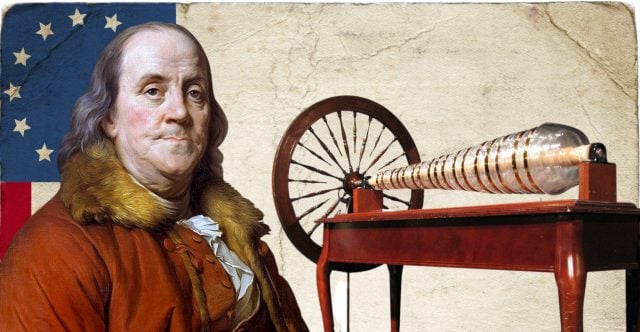Benjamin Franklin was one of the nation’s Founding Fathers, helping draft the Declaration of Independence. But did you know that he was also a talented musician and an inventor, amongst other things?
Benjamin Franklin invented the armonica in 1761. It was said to have caused musicians and listeners severe and nagging depression and melancholy. The disorienting quality of the sound it emits is due to how humans perceive sound.
Glass Harmonica
Benjamin Franklin invented the glass harmonica, also known as the armonica, in 1761 after hearing his friend Edward Delaval play a tune on wine glasses. Delaval gathered wine goblets and filled them with different amounts of water. He played a song by rubbing his wet finger against the goblets’ lips.
Franklin, who had a strong attention to detail and ingenuity, was convinced he could do better than Delaval. He drew up an elaborate design and commissioned a local glassblower, Charles James, to create the first glass harmonica.
Franklin’s armonica, named after the Italian word harmony, was made from thirty-seven glass bowls. These bowls have varying sizes and thicknesses. The bowls were fashioned in a shape of hemispheres, with an open socket in the middle.
These were also threaded on an iron spindle, which a foot pedal can turn. The bowls were arranged one after another, with the largest on one end and the smallest on the other. These were also color-coded to represent different tones. The bowls were arranged horizontally and fixed in a case with a wheel attached to its larger end. (Source: Benjamin Franklin House)
The player sat in front of the armonica and played it by applying a wet finger to the exterior of the rotating bowl. It was sold at forty guineas each or around 42 pounds. (Source: US History)
The Glass Harmonica’s Popularity
The armonica gained popularity in Franklin’s time. He mastered playing it and brought it to dinner parties and other gatherings to play it for his friends. The instrument became famous because a factory opened up and employed hundreds of workers, building and selling thousands of units.
Some notable composers used instruments in their compositions. Mozart’s Adagio and Rondo 617 were explicitly written for the armonica. Beethoven’s 1815 short melodrama also featured the instrument, playing while the narrator told a story.
Interestingly enough, most of the players were women, notably Marianne Davis, who performed all over Europe and even gave lessons to the French queen Marie Antoinette. (Source: PBS)
Psychological Effects
In 1798, Johann Friedrich Rochlitz, a German playwright, musicologist, and art and music critic, wrote about the glass harmonica in the Allgemeine musikalische Zeitung, or the General Music Newspaper.
In his words, he claims that the harmonica stimulates the nerves and plunges the player into a nagging depression and hence into a dark and melancholy mood. Rochlitz further warns the public that those with any nervous disorder or feeling melancholic should not play the instrument.
In further studies of the instrument and its music, it was determined that the disorienting quality of the sound it emits has to do with how humans perceive and locate ranges of sounds. The predominant pitch of the glass harmonica is within 1 and 4 kilohertz. This is the sound range where the human brain does not know how to locate nor classify the sound. (Source: Medium)
